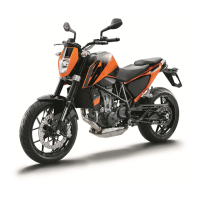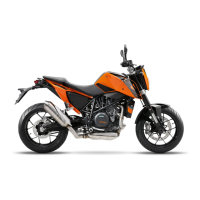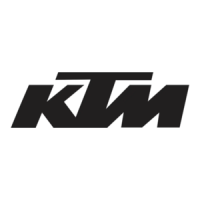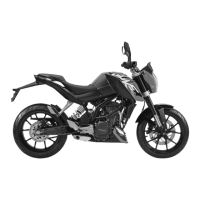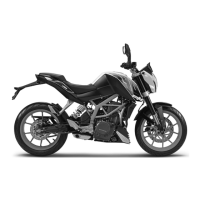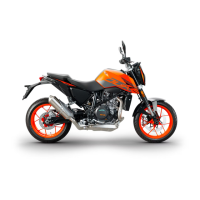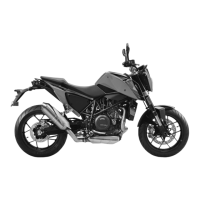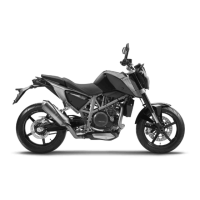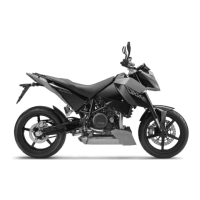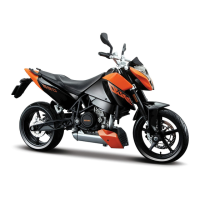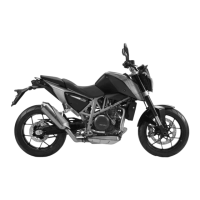SAFETY ADVICE
Safety advice
Emphasizes reading the manual and adhering to safety instructions for safe riding.
Overview of labels
Illustrates the location of important labels on the motorcycle with numbered pointers.
Noise emission warranty
Details the warranty coverage for the exhaust system concerning U.S. EPA Federal noise standards.
Consumer rights
Explains warranty claims submission and customer service contact information.
Tampering warning
Warns against tampering with the noise control system, citing federal laws and prohibited acts.
Safe operation
Covers essential safe operation practices, including warnings about alcohol and exhaust gas poisoning.
Protective clothing
Stresses the importance of wearing appropriate protective clothing for rider safety.
Work rules
Outlines general rules for performing work on the motorcycle, including tool use and part replacement.
Environment
Advises on responsible use and proper disposal of motorcycle-related fluids and components.
Owner's Manual
Emphasizes reading the Owner's Manual for operation, handling, and maintenance guidance.
VIEW OF VEHICLE
Clutch lever
Identifies the clutch lever with its page reference for detailed information.
Seat
Identifies the seat with its page reference for detailed information.
Passenger seat
Identifies the passenger seat with its page reference for detailed information.
Handrails
Identifies the handrails with their page reference for detailed information.
Seat lock
Identifies the seat lock with its page reference for detailed information.
Side stand
Identifies the side stand with its page reference for detailed information.
Shift lever
Identifies the shift lever with its page reference for detailed information.
Engine number
Identifies the engine number with its page reference for detailed information.
Tool set
Identifies the tool set with its page reference for detailed information.
Filler cap
Identifies the filler cap with its page reference for detailed information.
Light switch
Identifies the light switch with its page reference for detailed information.
Turn signal switch
Identifies the turn signal switch with its page reference for detailed information.
Horn button
Identifies the horn button with its page reference for detailed information.
Emergency OFF switch
Identifies the emergency OFF switch with its page reference for detailed information.
Hand brake lever
Identifies the hand brake lever with its page reference for detailed information.
Chassis number
Identifies the chassis number with its page reference for detailed information.
Fuse box
Identifies the fuse box with its page reference for detailed information.
Foot brake lever
Identifies the foot brake lever with its page reference for detailed information.
Passenger footrest
Identifies the passenger footrest with its page reference for detailed information.
CONTROLS
Clutch lever
Describes the clutch lever's location and its hydraulic, self-adjusting operation.
Hand brake lever
Describes the hand brake lever's location on the right handlebar for front brake engagement.
Throttle grip
Describes the throttle grip's location on the right handlebar.
Seat lock
Explains the location and operation of the seat lock, which can be used with the ignition key.
Tool set
Indicates that the tool set is located under the passenger seat.
Handrails
Describes the purpose of handrails for moving the motorcycle and for passenger grip.
Passenger footrest
Explains that passenger footrests are foldable and their states for solo or passenger operation.
Shift lever
Details the mounting location of the shift lever and shows gear positions.
Foot brake lever
Describes the location of the foot brake lever for rear brake engagement.
Side stand
Explains the location and function of the side stand for parking and its relation to the safety starting system.
COMBINATION INSTRUMENT
Overview
Provides an overview of the combination instrument, divided into indicator lamps and display areas.
Indicator lamps
Explains the meaning of various indicator lamps on the instrument cluster and their states.
Speed
Details how the speed is displayed in km/h or mph on the instrument cluster.
Time
Explains how the time is displayed and that it may need resetting after battery disconnection.
Temperature
Describes how the current ambient temperature is shown on the instrument cluster display.
Gear display
Explains that the current gear is shown on the instrument cluster display.
Fuel tank capacity
Details how the fuel tank contents are shown, with a warning for low fuel levels.
"Favorites"
Describes how to access and configure the "Favorites" menu for quick access to frequently used functions.
"Trip 1"
Explains the "Trip 1" display, showing distance, average speed, fuel consumption, and trip time.
"Trip 2"
Explains the "Trip 2" display, showing distance, average speed, fuel consumption, and trip time.
"General info"
Describes the "General Info" display, showing air temp, date, ODO, battery voltage, and time.
"Set Favorites"
Details how to configure the "Set Favorites" menu to customize displayed menus for quick selection.
"Settings"
Explains the "Settings" menu for configuring units, values, and enabling/disabling functions.
"Warning"
Describes the "Warning" menu for displaying and storing active warnings and error messages.
"TC/ABS"
Explains how to switch TC and ABS on/off and select ABS modes like "Road" and "SupMot".
"MTC/ABS"
Explains how to switch MTC and ABS on/off and select ABS modes for R models.
"Language"
Describes how to change the display language in the settings menu.
"Distance"
Explains how to set the unit of measure for distance (km or miles) in the settings.
"Temp"
Explains how to set the unit of measure for temperature (°C or °F) in the settings.
"Pressure"
Explains how to set the unit of measure for pressure (bar or psi) in the settings.
"Volume"
Explains how to select the unit of measure for consumption displays in the settings.
"Shift Light"
Explains the function and configuration of the Shift Light for gear shift recommendations.
"Extra functions"
Describes accessing and viewing optional extra functions available in the menu.
Drive Mode (optional)
Explains the Drive Mode selection (SPORT, STREET, RAIN) and its impact on engine and traction control.
RIDING INSTRUCTIONS
Starting
Explains the procedure for starting the engine, including safety warnings and notes on engine failure.
Starting off
Describes the procedure for moving off from a standstill, including clutch and throttle control.
Shifting, riding
Covers gear shifting techniques and general riding advice, with warnings on load changes and downshifting.
Warning Danger of accidents
Provides multiple warnings related to riding, including ignition key position, distractions, passenger safety, and tire grip.
Warning Danger of accidents
Continues warnings about riding conditions, including unstable handling, slipped baggage, and lack of roadworthiness.
Applying the brakes
Details safe braking procedures, warnings about wet/dirty systems, spongy brakes, and ABS usage.
Stopping, parking
Provides instructions and warnings for safely stopping and parking the motorcycle.
Transport
Offers notes and guidelines for safely transporting the motorcycle, including securing it.
Refueling
Details the refueling process, including fire and poisoning hazards, and fuel specifications.
TECHNICAL DATA
Engine
Lists detailed specifications for the engine, including design, displacement, bore, stroke, and lubrication.
Capacities
Specifies the required capacities for engine oil, coolant, and fuel.
Engine oil
Details the recommended engine oil types, grades, and capacities.
Coolant
Specifies the type and capacity of coolant required for the cooling system.
Fuel
States the total fuel tank capacity and the recommended fuel grade.
Chassis
Lists specifications for the motorcycle's chassis, including frame, fork, shock absorber, and brake system details.
